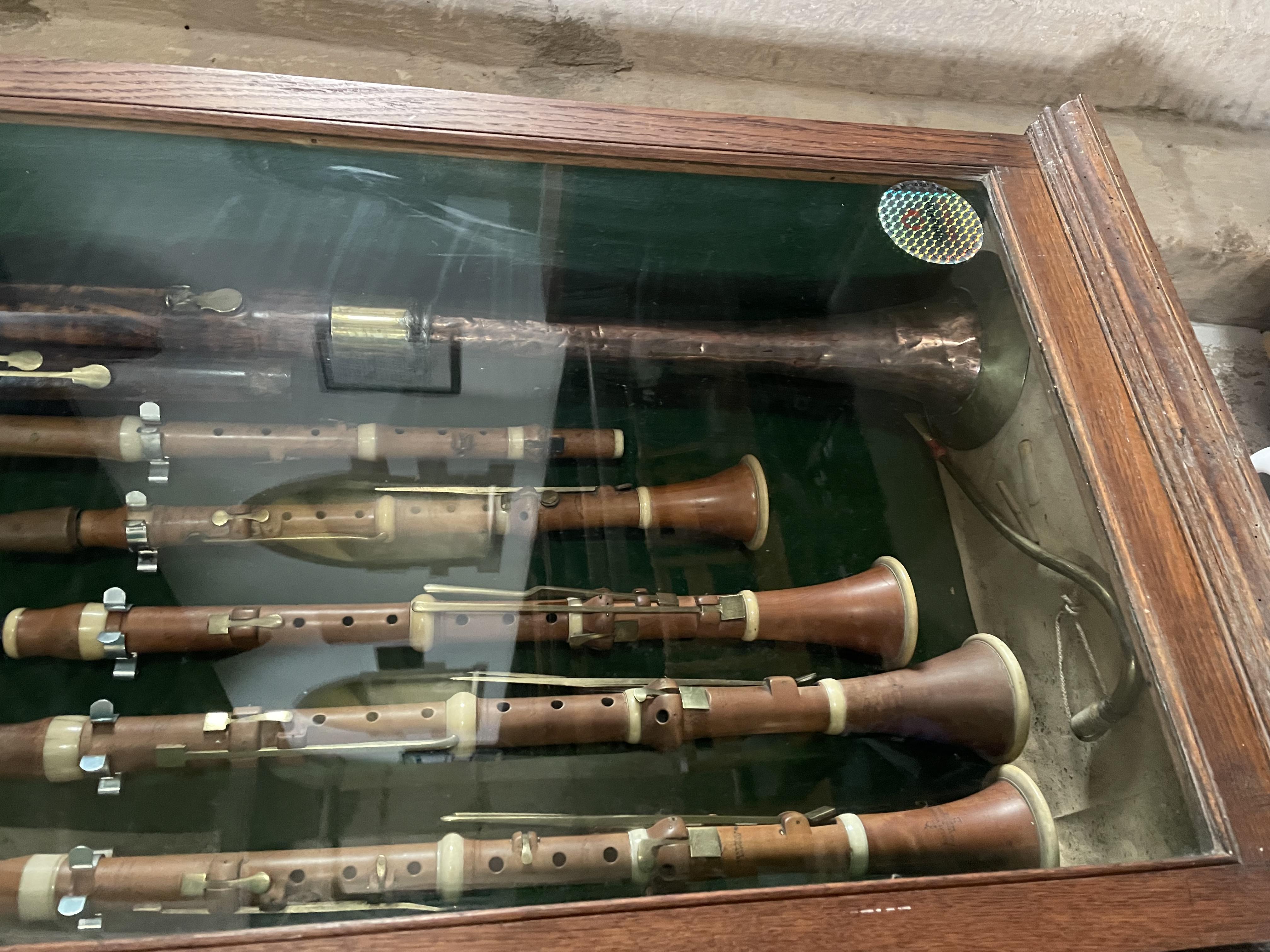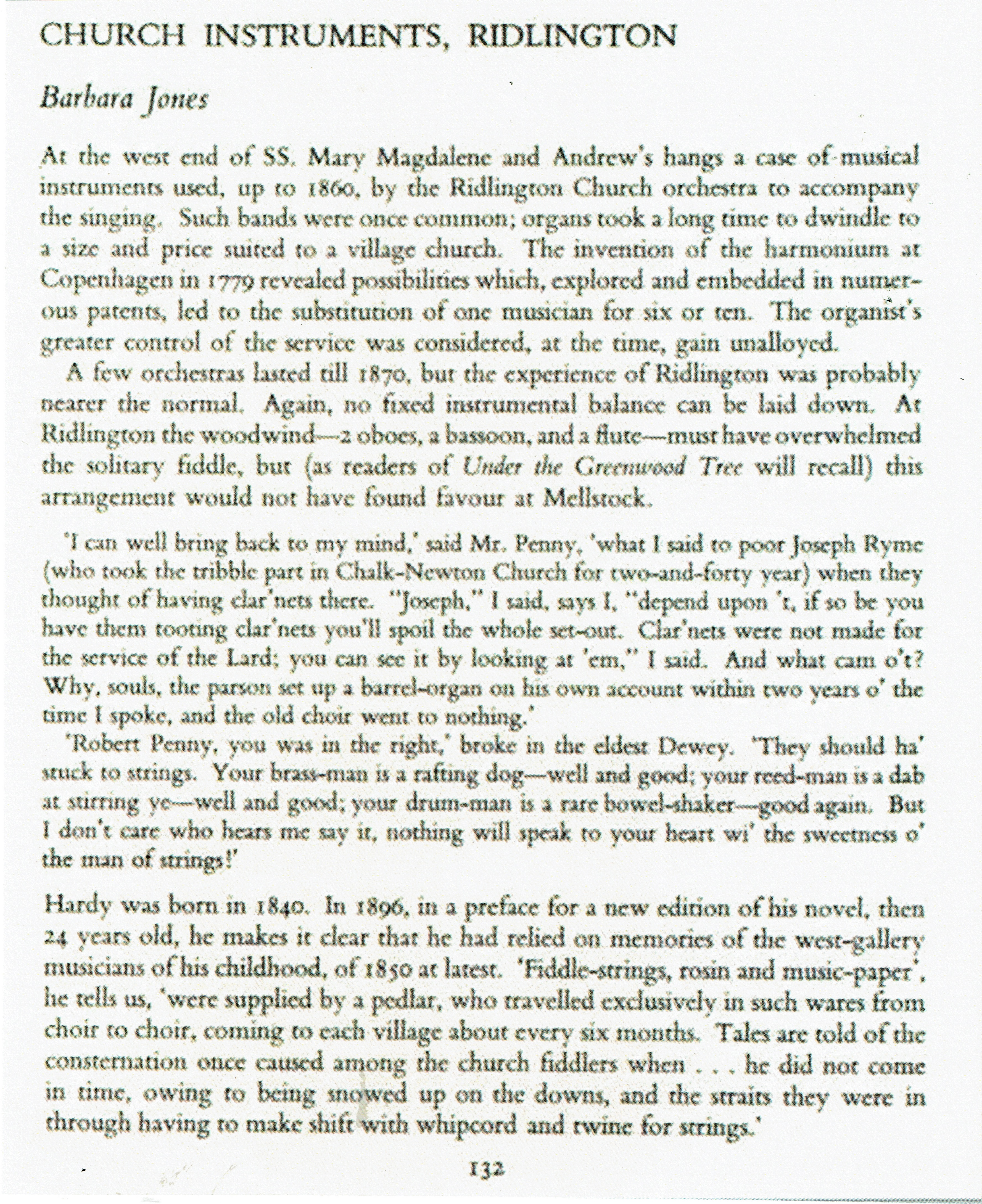West Gallery Instruments at Ridlington Church
I do a lot of walking throughout the East Midland Counties. In March 2024 I was on a circular going through the village of Ridlington in Rutland. My friends and I stopped to look around the village church dedicated to St. Mary Magdalene and St. Andrew.
Interestingly there is a display of old musical instruments at the west end of the nave that had been played in the church when it had a West Gallery. The Victorian restoration of the church heralded the demise of the church band. As in most churches across the land bands had been steadily losing the fight against the organ for musical control of services since the mid-18th century. The gallery at Ridlington was not kept when renovations were carried out during the 1860s though the organ did not arrive until 1898.

At the time we visited, there were parishioners in the church who willingly shared what they knew. The set of instruments had belonged to John Thomas Scott who was born in 1870 in Ayston, a neighbouring village. He donated them to the church in 1923. There are four clarinets in different keys, a flute, a bassoon (dating from 1795) and a violin. The bassoon looks to be quite special as it has a trumpet end.

I later found out that these along with other preserved Church Band instruments are recorded in the West Gallery Churches web site
http://www.westgallerychurches.com/index.html
A watercolour painting of the collection was made in 1943 by the English artist and writer Barbara Jones for "Recording Britain”. This was an artistic documentary project compiled as the country was facing the potentially devastating impact of the Second World War. After the war the collection of topographical watercolours and drawings recording English market towns and villages, churches and country estates, rural landscapes and industries, rivers and wild places, monuments and ruins was given to the V&A.

In the "Recording Britain" catalogue the reproduction of Barbara Jones's watercolour is accompanied by the following.

The V&A have most of "Recording Britain" online at
https://collections.vam.ac.uk/search/?id_category=THES48901&page=1&page_size=15
When I last looked there were some Barbara Jones watercolours to be seen but not the musical instruments at Ridlington.
Future research will attempt to explore:
Who were the makers of the wind instruments and the violin?
Why adapt the bassoon with a bell end like a trumpet?
How and why Mr. Scott of Ayston have these in his possession in the 1920s?
Steve Welton. The Greenwood Quire. Lincolnshire.